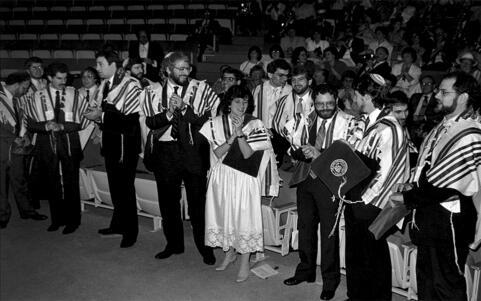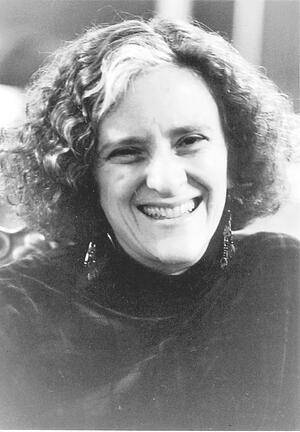Amy Eilberg
1985 was a year of change at the Jewish Theological Seminary (JTS). After more than a decade of intensive debate on the faculty and throughout the Conservative movement, the decision had been made to ordain women as Conservative rabbis. As it turned out, in the spring of 1985, I was to be the first woman so ordained.
But quite coincidentally, in that same year, a new ritual was added to the ceremonies celebrating the ordination of rabbis at JTS. Prior to this year, rabbis were ordained as part of a large academic convocation, at which all of the institution’s undergraduate and graduate degrees were awarded. The year that I was to graduate, a number of my male classmates convinced the school that since the ordination of rabbis was a religious event, not only an academic one, it should be marked by a separate religious ceremony prior to the academic convocation.
Over the course of the year, a group of students went about the fascinating task of creating an ordination ritual, for no such ritual exists in traditional Jewish sources. Among the prayers that the committee considered including was, of course, the Shehecheyanu blessing, in which we thank God, the One Who had “given us life, sustained us, and enabled us to reach this time.” For many, this blessing seemed the perfect expression of awe and gratitude to mark this sacred day in our lives. The most traditional of the students, however, were uneasy with this suggestion. Popular usage notwithstanding, Jewish law prescribes this beracha (blessing) not for once-in-a-lifetime events, but for recurrent events (such as the first peach of the season, the first bite of matzah each Pesach, or when donning a new article of clothing). After much discussion, a compromise was reached. The Shehecheyanu would, indeed, be included in the ritual. Those who felt uncomfortable with its use as a blessing for ordination would take care to wear a new article of clothing that day, but not recite the blessing in the morning when they dressed, so that when they recited the blessing during the ceremony, it would, for them, express their thanksgiving on the occasion of donning a new piece of clothing.
Ordination day came, and our ordination ritual was a beautiful, holy event. As the graduates greeted our loved ones and one another after the ceremony, one of my classmates, Rabbi Lenny Gordon, meaningfully approached me. Recalling the earlier debate about the use of the Shehecheyanu, he said emphatically, “I want you to know why I said the Shehecheyanu today. I said it for you.”
Rabbi Amy Eilberg is the first woman ordained as a Conservative rabbi by the Jewish Theological Seminary of America. She was a co-founder of the Bay Area Jewish Healing Center, where she directed the Jewish Hospice Care Program. A leader of the Jewish healing movement, she lectures and writes on issues of Jewish spirituality, healing, and spiritual direction, and has been training Bikkur Holim volunteers for the Twin Cities Jewish Healing Program since 1996. Rabbi Eilberg currently serves as Co-Director of the Yedidya Center for Jewish Spiritual Direction, a center dedicated to introducing the practice of Jewish Spiritual Direction to the American Jewish community through training, public education, and professional support. She offers spiritual direction to individuals and groups in St. Paul, Minnesota. Rabbi Eilberg is married to Dr. Louis Newman and is the proud mother of one daughter, Penina Tova, and two step-sons, Etan and Jonah Newman.




